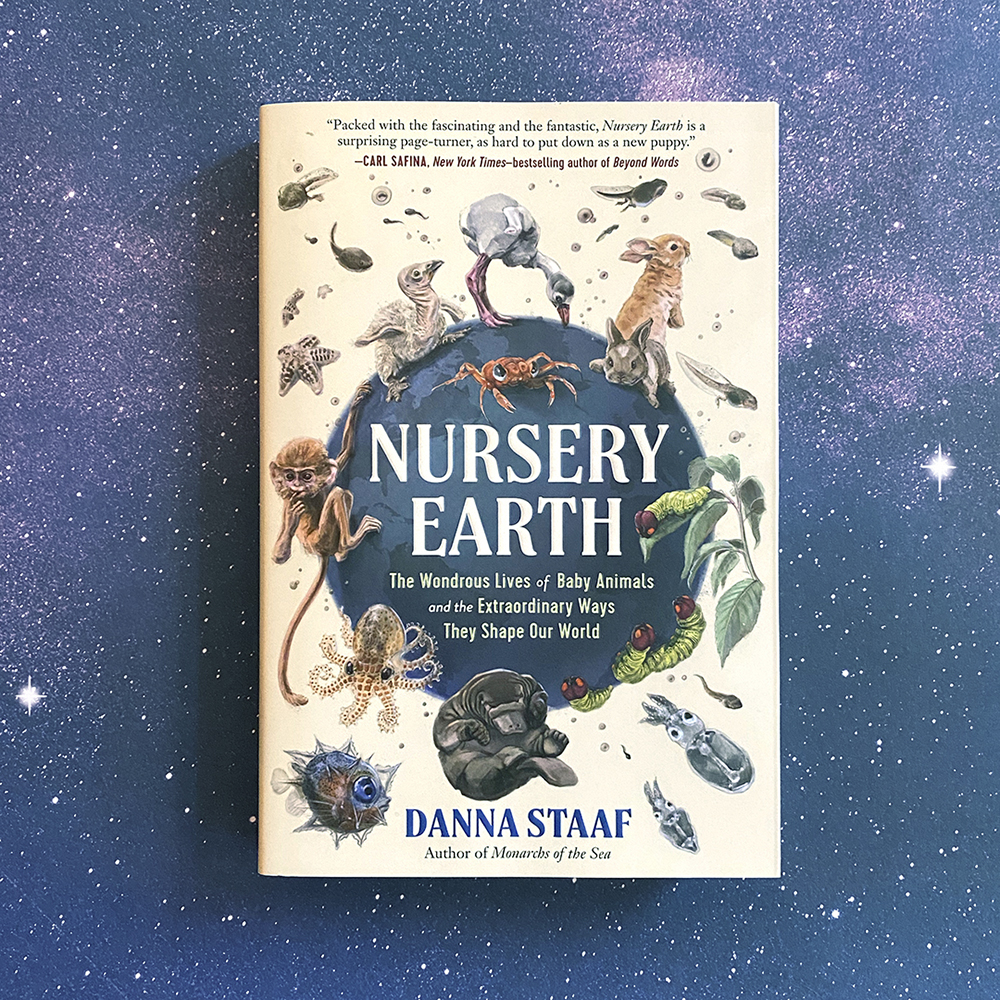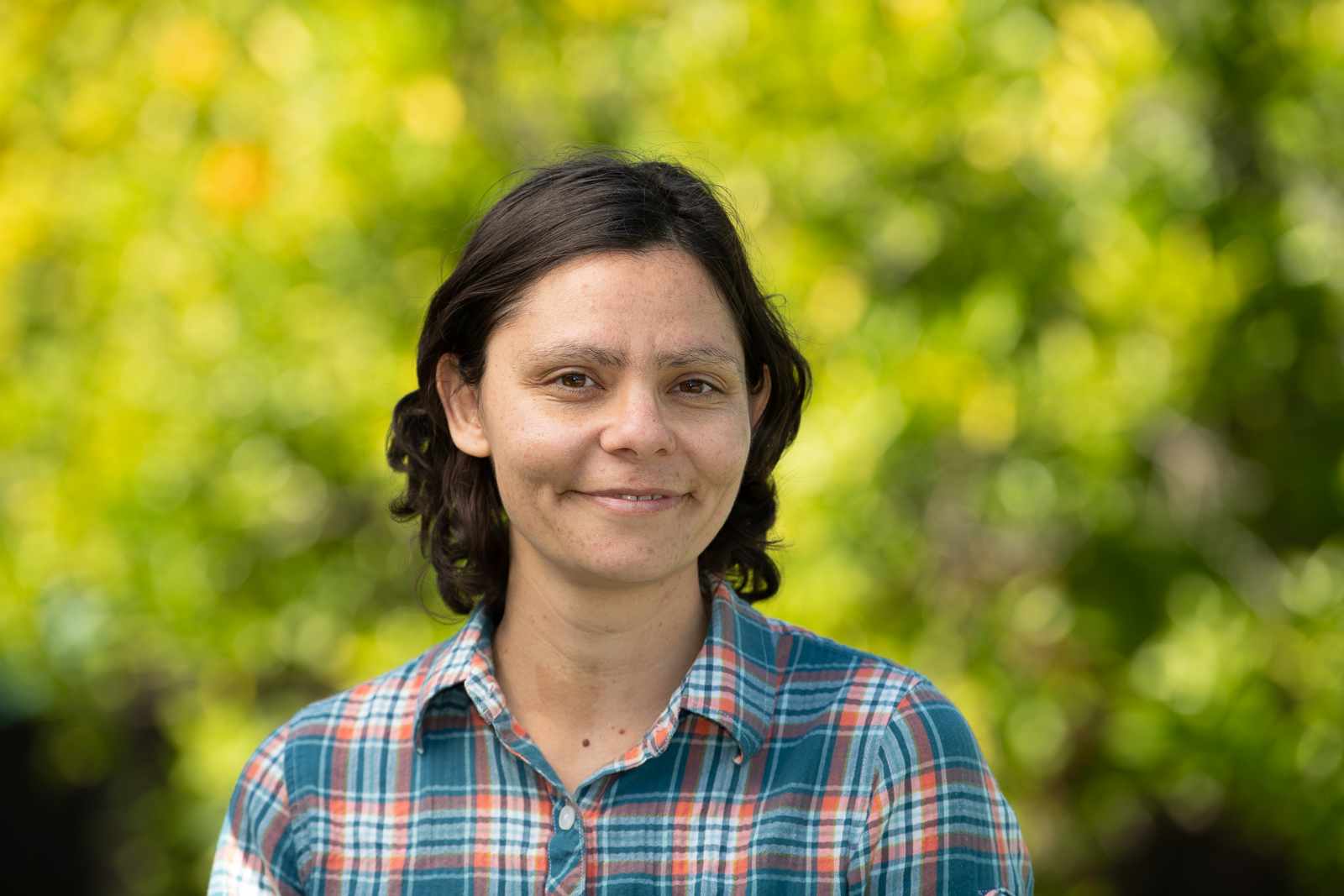Did you know that some animal babies—like the tadpoles of paradox frogs and the larvae of Goliath beetles—actually grow bigger and heavier than their parents, then shrink at metamorphosis? Or that a salamander embryo breathes with the help of algae inside its cells?
You’ll learn about all of these creatures and more in Nursery Earth, a first-of-its-kind journey into the hidden world of baby animals, from egg to tadpole and chick to fledgling. Author and researcher Danna Staaf shares how the tiny, hidden lives that scientists study in the lab and in the wild reveal some of nature’s strangest workings, making the case that these young creatures are not just beings in progress but beings in their own right.
__________________________________
Want to learn more? Read this excerpt from Nursery Earth on the comeback of the California Condor:
HUMANS HAVE BEEN RAISING THE young of other animals since long before recorded history. We’ve raised them for food, for friends, and for fun. These days, we’re raising a greater diversity of species, and for a greater diversity of reasons, than ever before. In large part, this diversification is motivated by a better understanding of our impacts on, and interdependence with, all the ecosystems of our planet.
Realizing that we’ve already driven many species to extinction, we design captive breeding programs to try to save the endangered ones. Finding that industrialized farming of mammals contributes to climate change and habitat destruction, we branch out into breeding new protein sources. With overfishing rampant throughout the world’s oceans, we turn to aquaculture of our favorite species. Many of these efforts have had encouraging results, while others carry troubling implications along with their promise.
The early life stages of animals—eggs, embryos, larvae, and hatchlings—tend to be the most vulnerable to environmental impacts. Yet we rarely think about them until the problems are glaringly obvious: eagle eggs crushed because of DDT, salmon fry struggling to survive in contaminated streams, sea turtle hatchlings disoriented by light pollution. But once we recognize the situation, we can often help. Science and legislation brought back the eagles, various conservation efforts are underway for salmon, and turtle-safe lighting along with other nest protections are helping some sea turtle populations to rebound. One of my favorite stories of conservation success is the California condor.
Continue reading this excerpt at Atlas Obscura.

Curious how Nursery Earth came to be? Check out this Q&A with author Danna Staaf, who earned a PhD in biology from Stanford University with her studies of baby squid:
Q: Nursery Earth delivers information about an astonishing variety of baby animals. How would you summarize your book for someone interested in picking up a copy, and what do you hope readers get out of it?
Danna Staaf: Whatever you already know about animal babies, I promise it’s just the tip of the iceberg. Sure, mammals get pregnant and give live birth—but so do fish and frogs and flies. Yeah, caterpillars transform into butterflies—but sea urchins, salamanders, and worms go through similarly stunning metamorphoses. This voyage through the animal kingdom will delight you with the diversity of animal development, as well as the remarkable commonalities.
I’ve joked that Nursery Earth is “a baby book for Mother Earth,” but really it’s a baby book for all of us who live on the planet. At any given moment, most of the animals on Earth are, in fact, babies—from chicks and tadpoles to caterpillars and larvae. As these tiny creatures eat and grow and migrate, they become needles and threads, stitching diverse ecosystems together and shaping the future of our world. Animal babies are both incredibly vulnerable and incredibly vital, and I hope the book will help readers appreciate maggots as much as ducklings.
Q: How did you initially become interested in baby animals, and what inspired you to choose them as your topic of focus for Nursery Earth?
DS: The seed of Nursery Earth was planted when I was working as a marine biologist.
In grad school I studied how baby squids the size of a rice grain could survive and grow into adults as big as I am. To understand more about animal babies in the ocean, I took a summer course at Friday Harbor, in the San Juan Islands. I met an incredible variety of animals that I had no idea existed before, because I’d only ever seen the adults. Imagine if you only knew about adult butterflies, and then someone showed you caterpillars and told you they’re the same animal. It would blow your mind.
That degree of difference between babies and adults turns out to be extremely common in the animal kingdom, and I became fascinated with understanding why so many babies have their own weird shapes. I learned that these features are important not only for their own survival, but for the functioning of Earth’s ecosystems. And then I was so excited. I wanted to tell everyone about it.
This book seed was watered and fertilized when I gave birth to my two human babies and became a parent. I was struck by the realization that neither squid babies nor human babies are incomplete adults, but whole beings in their own right, and some features make them more similar to each other than to grown-ups of their own species!
Q: Since you already had a background in biology and marine life prior to writing the book, what did you learn about science and animals during the writing process that you didn’t know before?
DS: I learned a lot about balance. Often it’s tempting to frame scientific discoveries as overturning wrong ideas or myths—“Everyone used to think A, but it’s actually B!” But the overall feeling I got from reading papers and talking to scientists in this field was not that new ideas are overturning old ones, but that science is working to integrate a lot of different ideas that all reflect aspects of truth in certain situations. I came to a point where I wanted, not to resolve the age-old “nature vs. nurture” debate, but to reframe it as “nature AND nurture.” All of us animals develop and grow as a conversation between our genes and our environment.
Q: Which information presented about animal development do you think will be new to readers, even those with science backgrounds?
DS: Ever since scientists learned about DNA, we’ve imagined that an animal builds its body from a set of genetic instructions, independent of the environment. But in recent years we’ve learned that the process of “growing up” is really a process of “growing with.” An animal’s trajectory from fertilized egg to functional body is heavily influenced by its environment, from symbionts and parasites to natural and man-made chemicals. Scientists are just beginning to grapple with this aspect of developmental biology, and Nursery Earth will be the first popular science book to cover it in detail.
Q: Were there any specific animal facts or behaviors that surprised you while writing?
DS: I wanted to write an overview of development across the animal kingdom, and I figured it was going to look pretty different in different groups: baby kangaroos live in pouches; baby birds hatch from eggs; baby insects look and act like worms. But I was continuously surprised and delighted by the similarities I encountered between incredibly different groups.
Marine worms and terrestrial insects, which look nothing alike either as babies or adults, do metamorphosis in the same way. Embryonic sharks and embryonic mammals both get nutrients from their mothers through a placenta. Development is a complex, intricate process, and yet environmental pressures are so similar that evolution has created similar developmental processes and structures over and over.
Q: Since you cover such a wide scope of baby animal groups in Nursery Earth, did you have to travel while composing research? Is there anywhere specific you would be interested to visit in the future?
DS: I did a lot of research for this book during lockdown and quarantine, so most of my reporting was done remotely. The scientists I spoke to were all incredibly helpful, and I’m super grateful they made the time for Zoom calls with me! But I would have loved to visit their laboratories and field sites, especially Jeff Tomberlin in Texas, to see his giant vats full of squirming black soldier fly larvae, and the Kakapo Recovery Program in New Zealand, to see the flightless parrots whose embryos so often die early in development. I also would have loved to travel to the Caribbean where, if I was lucky, I might have spotted some of the sea star larvae that clone themselves to cross oceans, and to join a deep-sea research cruise, where I could have seen the larvae of vent worms that boldly go where no worm has gone before.
Q: With future travel and research in mind, do you think the information you gathered for the book is going to contribute to any future projects?
DS: Yes! There are so many wonderful animal stories that didn’t fit in the book, or that I’d love to expand on and give their own space. For example, just as I was finishing the text for the book, I learned about an amazing story of parasitic larvae that seems like a case of instant karma. I wrote in the book about a type of freshwater mussel that produces parasitic babies called bear-trap larvae. The parent mussels make lures shaped like tasty fish or shrimp that tempt predatory fish to come close, and when they do, the mussels release a cloud of bear-trap larvae that attach themselves to the gills of the fish and hitch a free ride. Well, that’s cool enough, but then I learned that another kind of fish, called bitterlings, actually target these same mussels with their own parasitic larvae. The bitterling moms have an ovipositor that they use to inject their larvae into the gills of the mussels. So it’s like, okay, the mussel babies are parasitizing fish, and then the mussel parents are also parasitized by fish babies. The circle of life is so beautiful.

Nursery Earth is available now! Get your copy Here.


